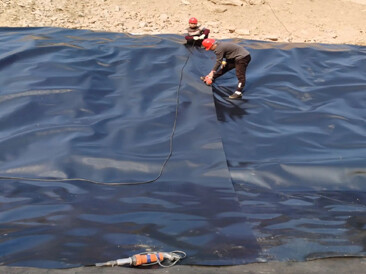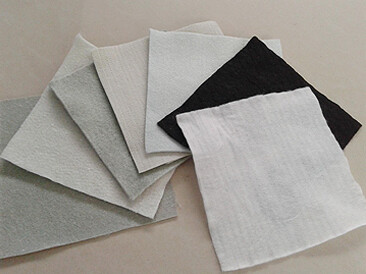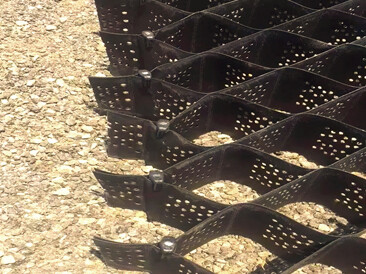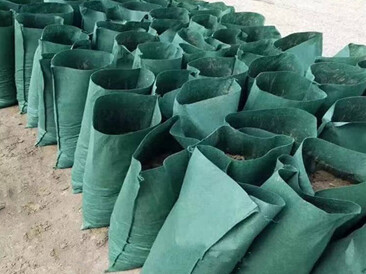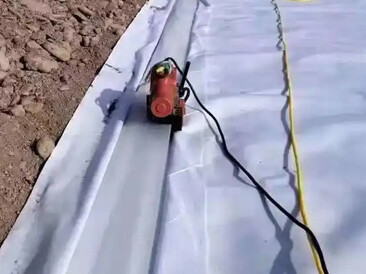NEWS
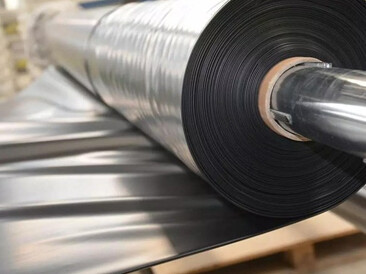
The installation and maintenance of geomembranes need to be carried out strictly in accordance with the specifications to ensure their performance and service life. The following is a detailed introduction:
A. Installation
Preparation
Site cleaning: It is necessary to remove sharp objects such as stones and tree roots in the construction site to ensure that the surface of the base is flat and solid to avoid piercing the geomembrane.
Material inspection: Check the appearance, specifications, performance indicators, etc. of the geomembrane to ensure that it meets the design requirements. At the same time, check whether the supporting welding equipment, tools, etc. are complete and can be used normally.
Laying
Unfolding method: According to the shape of the site and the size of the geomembrane, the laying direction and sequence are reasonably planned. It is usually laid from one end to the other to minimize splicing. When laying, pay attention to avoid wrinkles and twists in the geomembrane. It should be naturally unfolded and close to the base.
Connection method: Common connection methods are welding and bonding. Welding is to heat and melt the edges of the geomembrane through heat-sealing equipment and press them together to form a firm connection; bonding is to use a special adhesive to stick the edges of the geomembrane together. After the connection is completed, the weld quality inspection is required, such as using the inflation method, vacuum method, etc. to detect whether the weld has defects such as leaking welding and false welding.
Fixation and protection
Fixation: During the laying process of the geomembrane, it is necessary to fix it in time to prevent it from being blown up or shifted by the wind. Generally, earth bags, sand bags or special fixing nails are used to fix the geomembrane on the base layer. The spacing of the fixing points should be reasonably determined according to factors such as the material of the geomembrane and the laying environment.
Protection: After the geomembrane is laid, it should be covered or other protective measures should be taken as soon as possible to avoid it from being exposed to the sun for a long time, and to prevent mechanical damage and human damage during the construction process. For example, in a landfill, the geomembrane needs to be covered with soil or other covering materials in time after it is laid.
B. Maintenance
Regular inspection
Appearance inspection: Regularly inspect the surface of the geomembrane to check for damage, cracks, holes, aging, etc., and pay special attention to welds, corners and areas susceptible to external forces.
Leakage detection: Leakage detection equipment, such as electrical leakage detection system, can be used to regularly detect leakage of geomembranes and find potential leakage points in time. For some small water conservancy projects or ponds, it is also possible to judge whether there is leakage by observing water level changes.
Repair treatment
Small area damage: For small area damage found, the patch method can be used for repair. First clean the damaged part, then cut a geomembrane patch with the same shape and slightly larger size as the damaged part, and fix the patch to the damaged part by welding or bonding to ensure that the patch is firmly connected to the surrounding geomembranes.
Large area damage: If the geomembrane is damaged or aged over a large area, it may be necessary to replace part or all of the geomembrane. When replacing, pay attention to the connection quality of the new and old geomembranes to ensure that their anti-seepage performance is not affected.
Surrounding environment maintenance
Prevent the accumulation of debris: Keep the environment around the geomembrane clean and tidy, avoid the accumulation of debris and garbage near it, prevent these debris from damaging the geomembrane, and also facilitate the inspection and maintenance of the geomembrane.
Control vegetation growth: For geomembranes laid in open air, the growth of vegetation around them should be controlled to prevent plant roots from penetrating the geomembrane and affecting its anti-seepage performance. This can be controlled by regularly pruning vegetation and using herbicides, but care should be taken to prevent herbicides and other chemical substances from damaging the geomembrane.
Chat Online
Africa
South Africa, Nigeria, Kenya, Zambia, Tanzania

